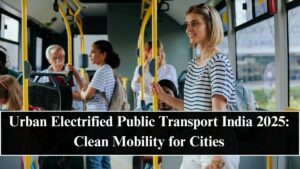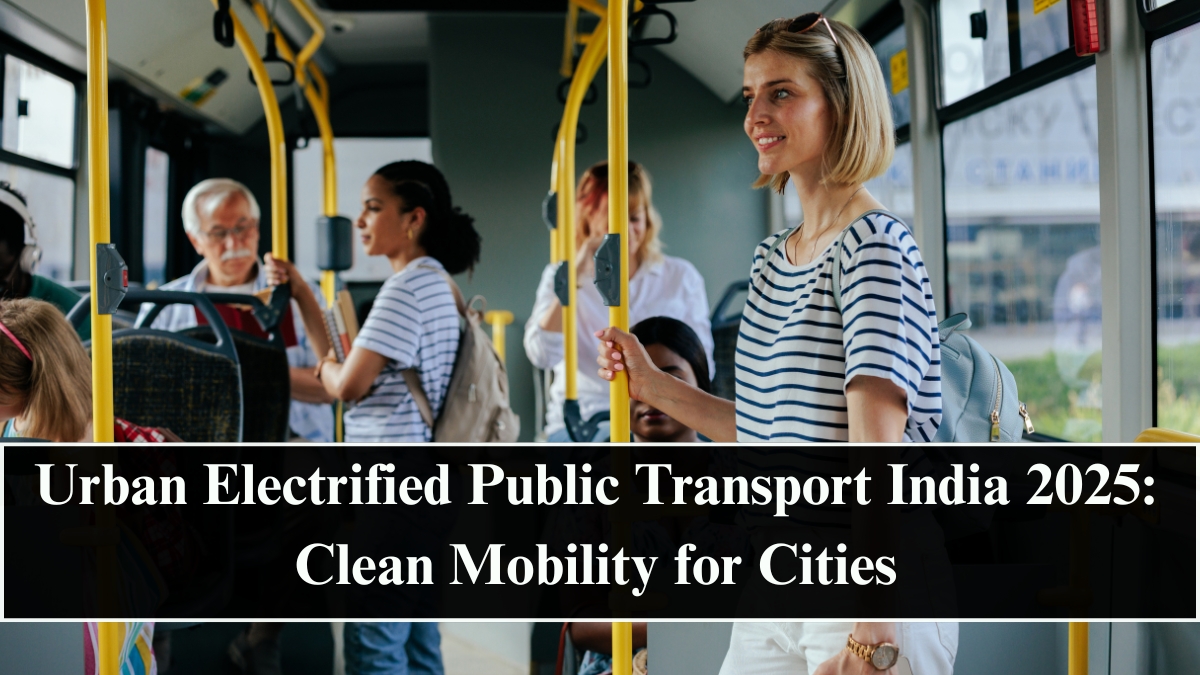India’s cities are entering a new era of clean and connected commuting. With Urban Electrified Public Transport India 2025, the country is taking major strides toward replacing fossil fuel-based fleets with electric and smart mobility systems. From buses and metros to shared e-mobility services, electric public transport is becoming the backbone of sustainable city infrastructure.
Driven by government policies, private innovation, and public demand, India’s transport sector is rapidly electrifying — reshaping how millions of urban residents move every day.

Government Push for Electrified Public Transport
The transition to electric public transport has been catalyzed by strong policy frameworks such as FAME-II (Faster Adoption and Manufacturing of Hybrid and Electric Vehicles) and the National Electric Bus Program (NEBP). These initiatives provide subsidies for electric buses and charging infrastructure, promoting large-scale fleet conversion across metro and tier-2 cities.
Under FAME-II, over 10,000 electric buses are being deployed across states like Delhi, Maharashtra, Gujarat, and Tamil Nadu. Additionally, Smart City Missions are integrating clean transport as a core element of urban planning, ensuring last-mile connectivity through e-buses, e-rickshaws, and shared EV networks.
State-Level Leadership and City Initiatives
Cities like Delhi, Pune, Mumbai, Bengaluru, and Hyderabad have emerged as frontrunners in the e-bus adoption race. Delhi, for instance, has one of the largest e-bus fleets in Asia, operated by DTC and private partners. The BEST (Brihanmumbai Electric Supply & Transport) in Mumbai is expanding its electric fleet with the goal of 100% electrification by 2027.
In Pune and Chennai, public-private partnerships (PPPs) are driving progress by integrating smart ticketing, route optimization, and solar-powered depots. These city-level innovations are creating a replicable model for other urban centers across India.
Technology at the Heart of Smart Transit
Urban electrified transport India 2025 is not just about switching to electric — it’s about creating an intelligent, data-driven ecosystem. Advanced telematics systems, AI-based fleet management, and real-time passenger information systems are improving route planning, maintenance, and user experience.
Electric buses now come equipped with IoT-enabled diagnostics that monitor battery health, energy efficiency, and driver behavior. Charging infrastructure is increasingly automated and connected through centralized dashboards, allowing operators to optimize routes and minimize downtime.
Sustainability and Cost Efficiency
While the initial cost of electrification remains high, the long-term benefits are clear. Electric buses and vehicles have 70–80% lower operational costs, reduced maintenance needs, and zero tailpipe emissions.
The environmental benefits are equally striking — an average e-bus can reduce up to 1,000 tonnes of CO₂ emissions over its lifespan. Moreover, with the integration of solar-powered charging depots, cities are lowering their dependency on coal-based electricity, creating a truly clean energy cycle.
Integration with Metro and Shared Mobility
The future of city mobility in India lies in integration. Public transport networks are being linked with metro systems, bike-sharing platforms, and app-based EV taxis for seamless multi-modal movement.
Digital platforms like MoBus, Yulu, and Chalo are offering unified ticketing and tracking, making public transport more accessible. The goal is not just electrification, but also interconnectivity and convenience — transforming public transport from a necessity into a preferred choice.
The Road Ahead for Urban Mobility
By 2025, India’s urban transport vision is focused on creating net-zero mobility corridors across major cities. The combination of policy support, public investment, and private innovation is propelling the nation toward a future where electric buses, metros, and shared mobility services define urban life.
With Urban Electrified Public Transport India 2025, India isn’t just electrifying its roads — it’s reimagining its cities as cleaner, quieter, and smarter living spaces built on sustainable mobility.
FAQs
What is urban electrified public transport?
It refers to electric-powered public transportation systems, including e-buses, metros, and shared EVs, designed to reduce emissions and improve efficiency in cities.
Which Indian cities are leading in electric public transport?
Delhi, Mumbai, Pune, Chennai, and Bengaluru are leading with large-scale electric bus deployment and smart mobility programs.
How does FAME-II support public transport electrification?
FAME-II provides financial incentives for electric bus purchases, charging stations, and infrastructure development to accelerate nationwide adoption.
Are electric buses cheaper to operate?
Yes. They have significantly lower fuel and maintenance costs compared to diesel buses, making them more economical over their lifetime.
What is the long-term goal of India’s electrified transport plan?
India aims for fully integrated, zero-emission urban transport systems powered by renewable energy by the end of the decade.
Click here to know more.
